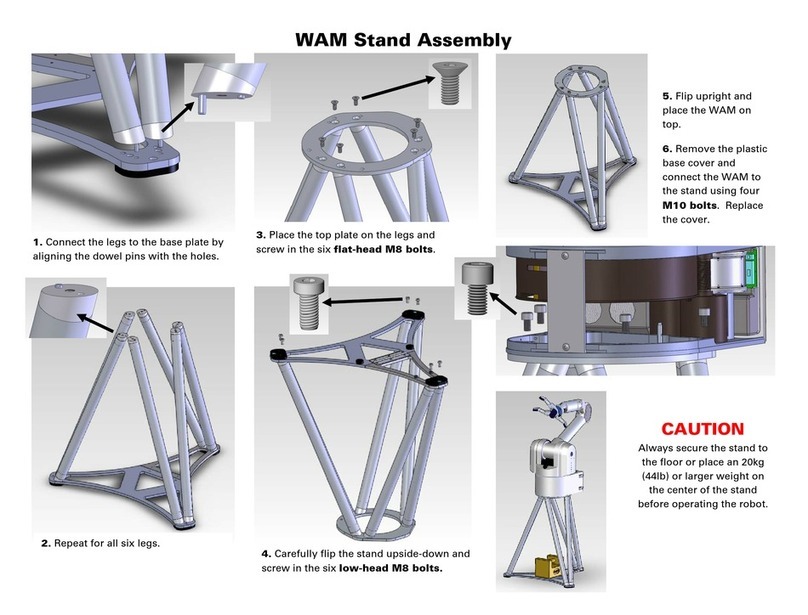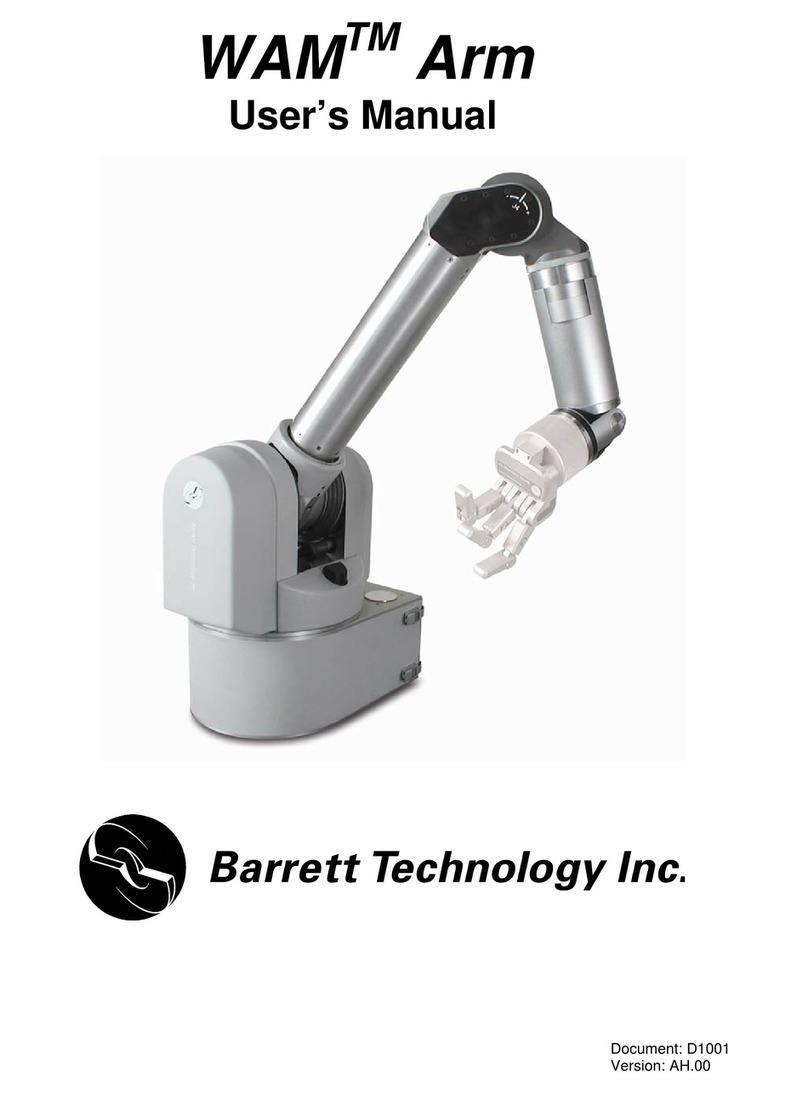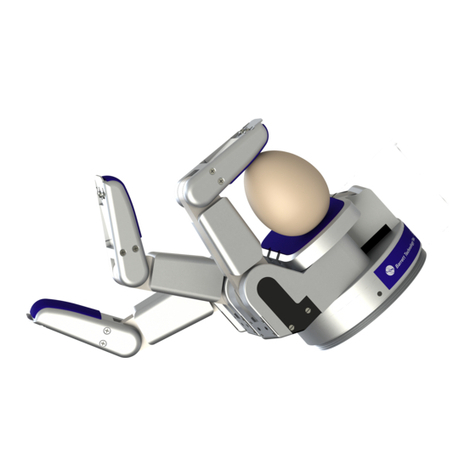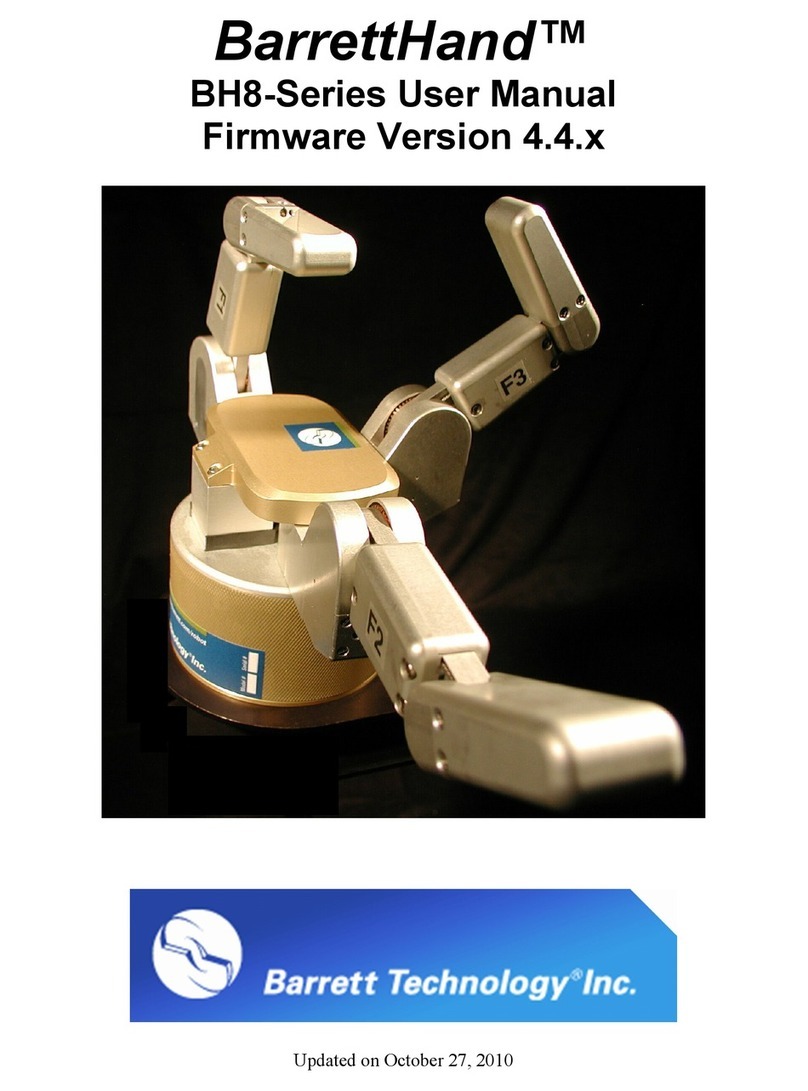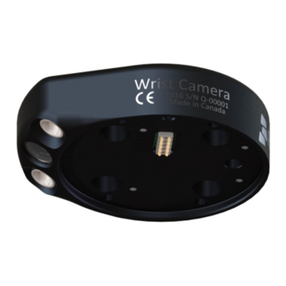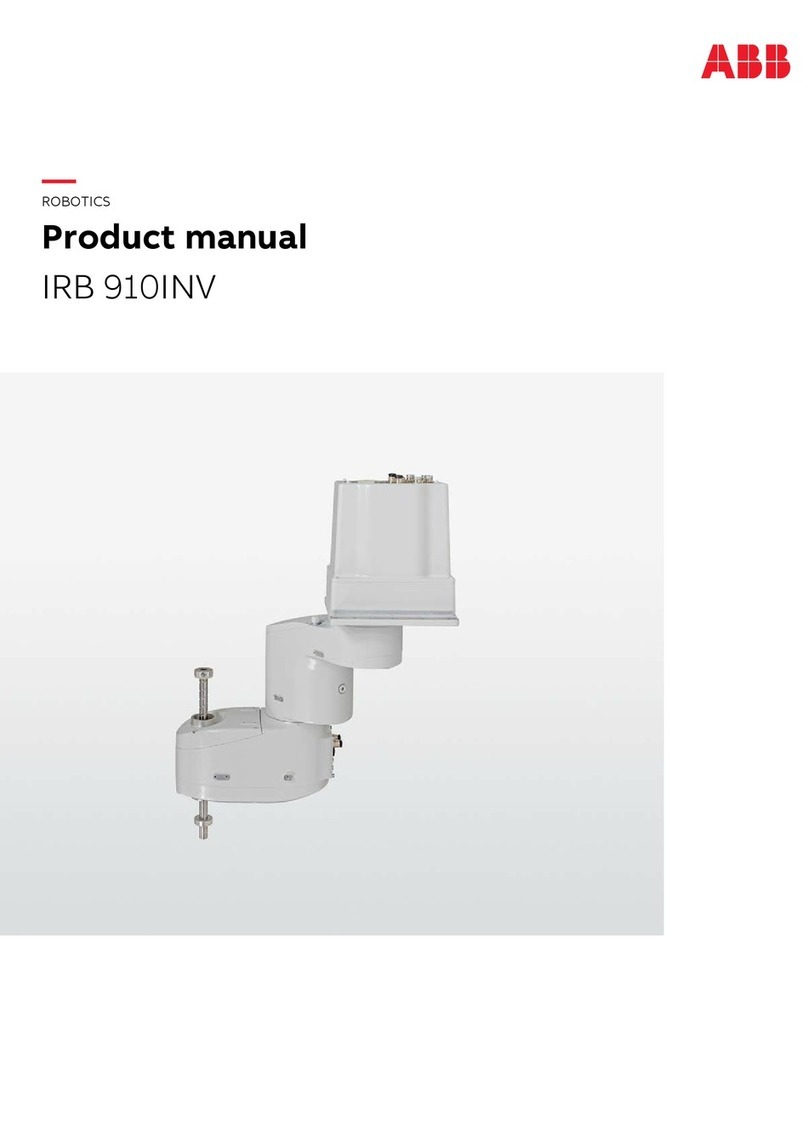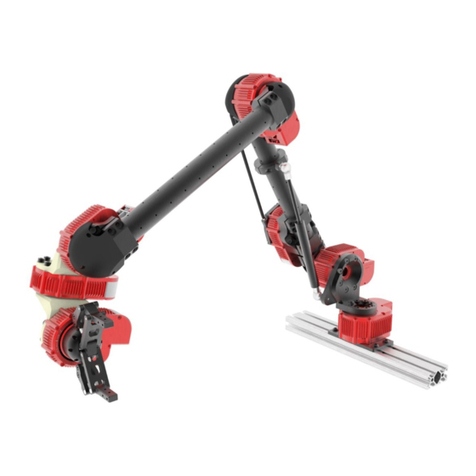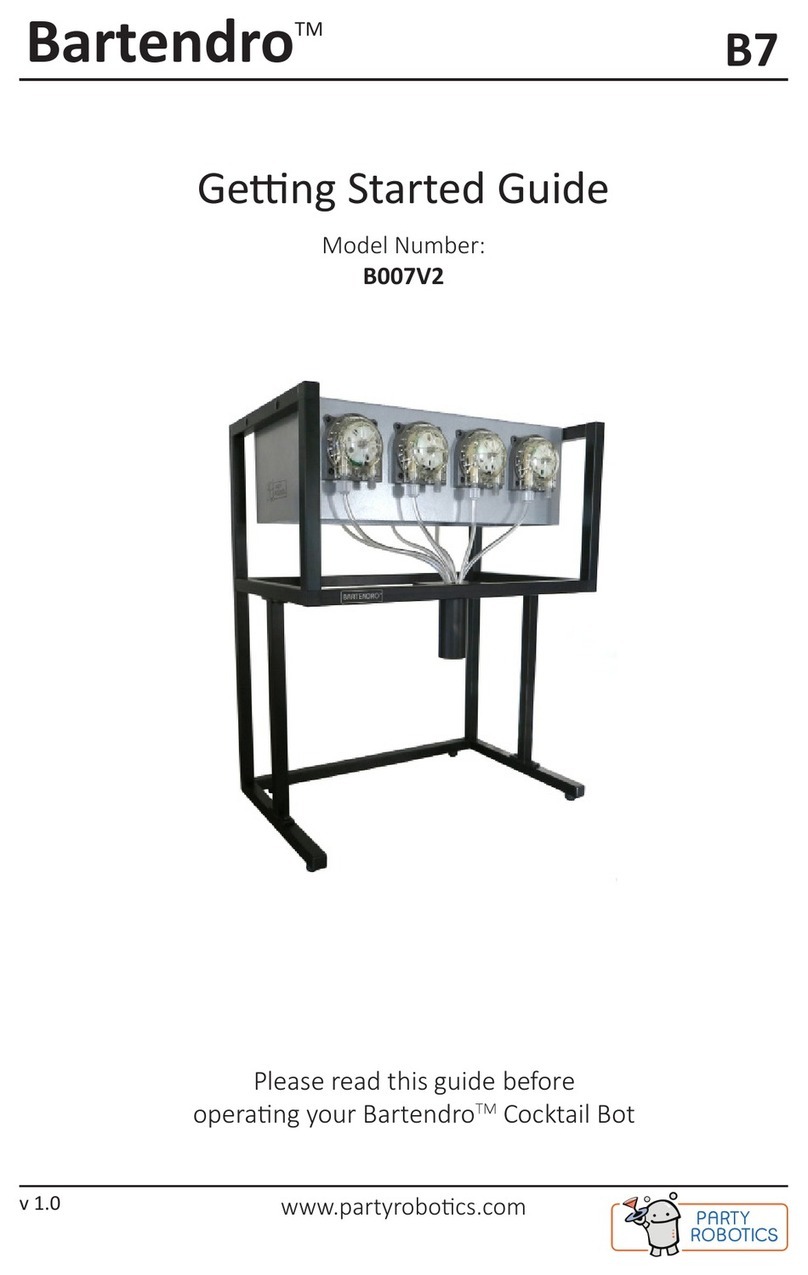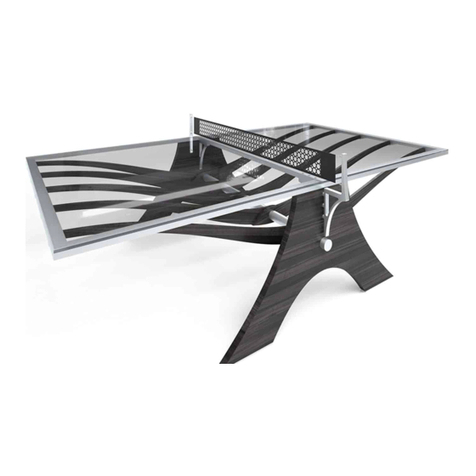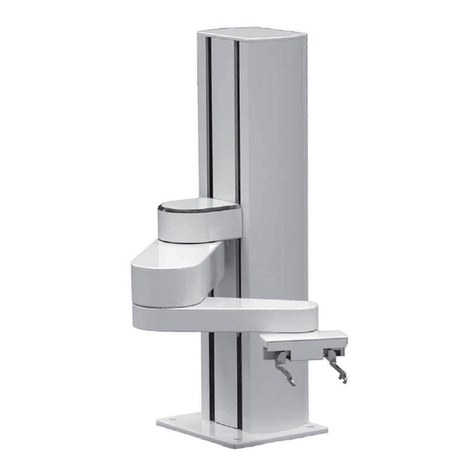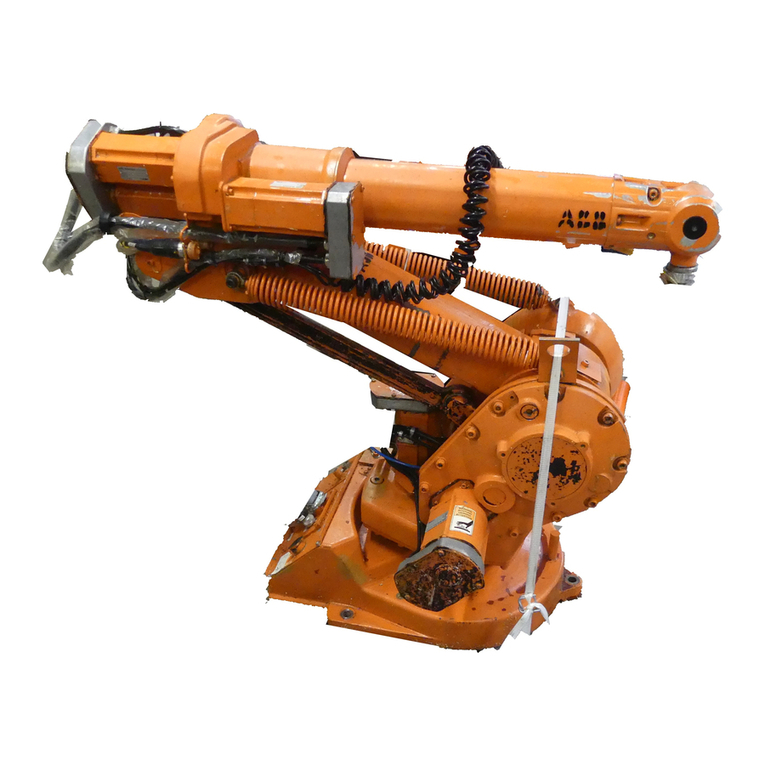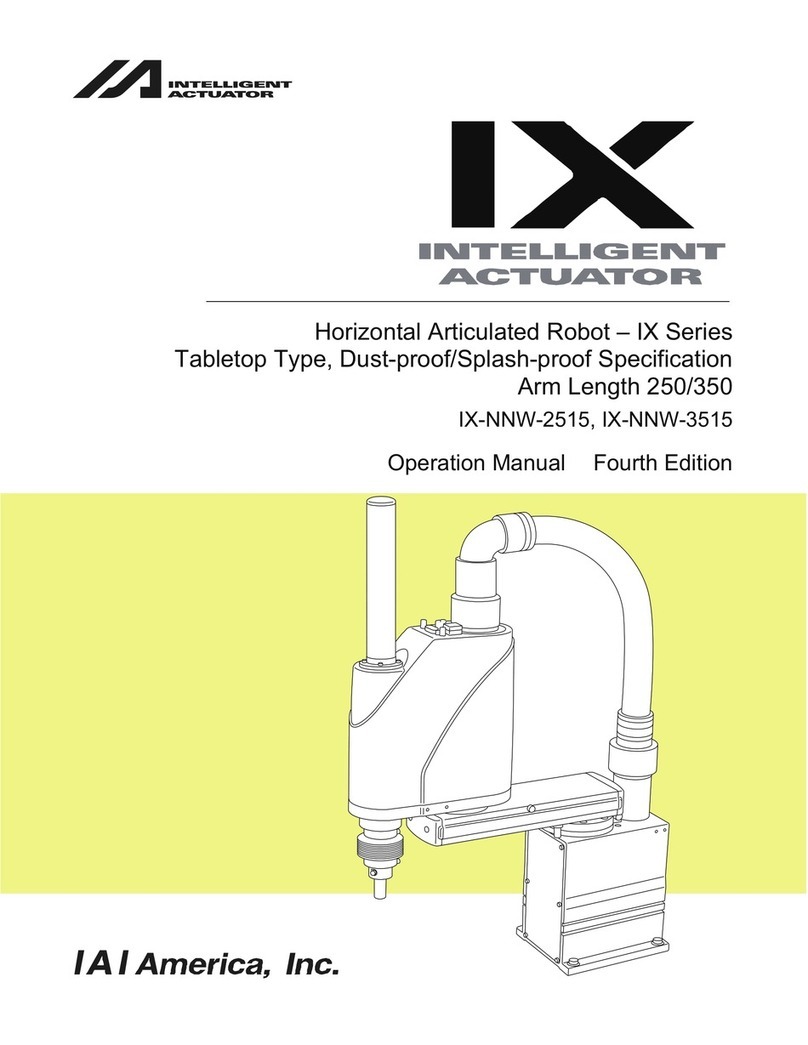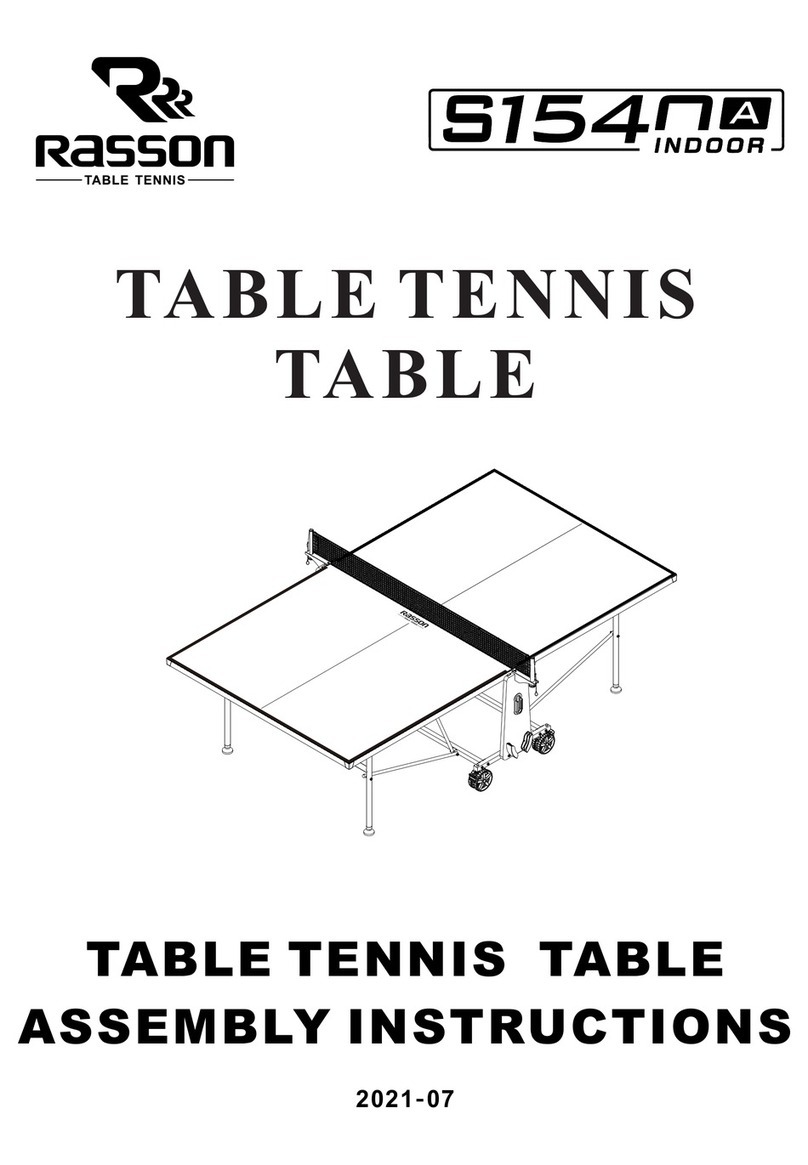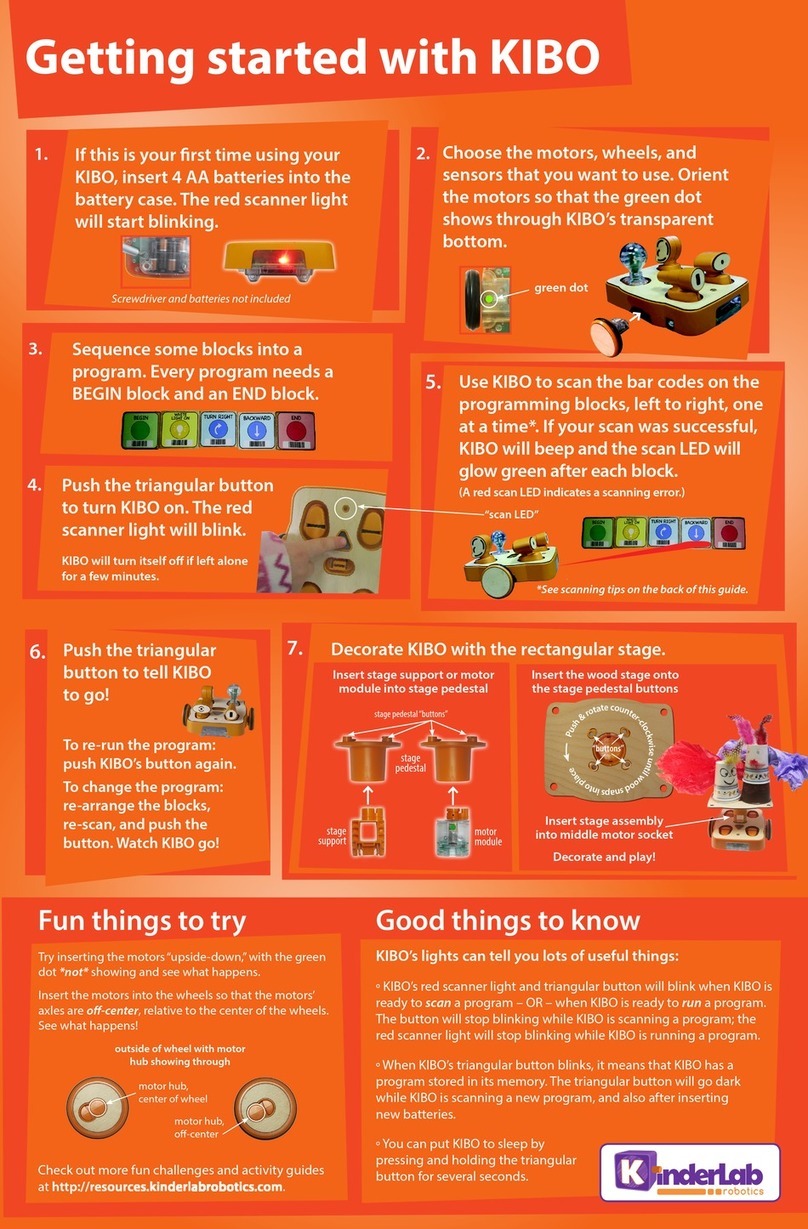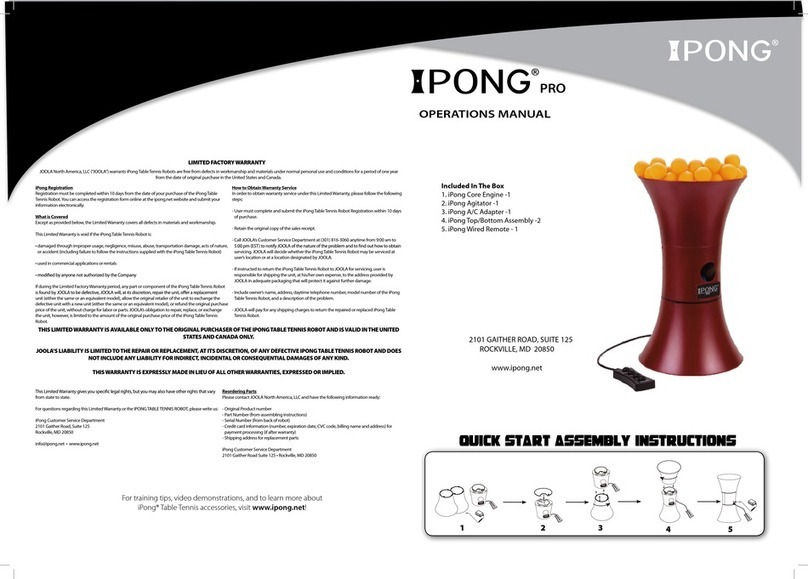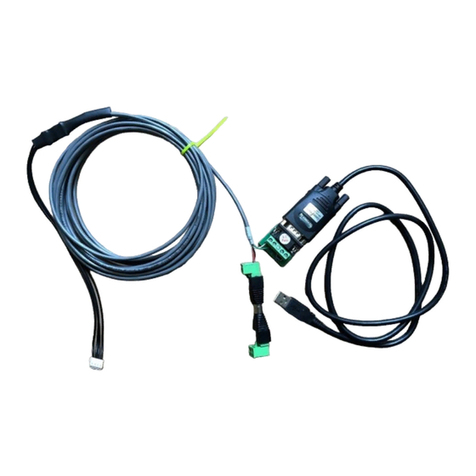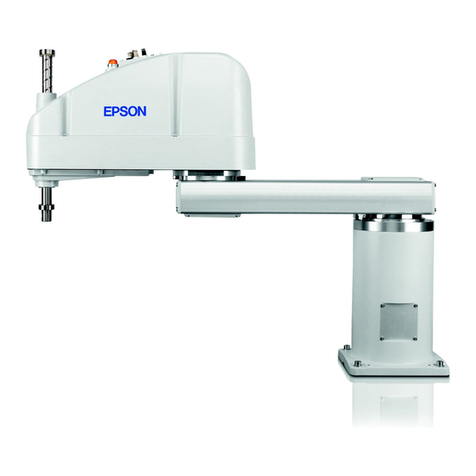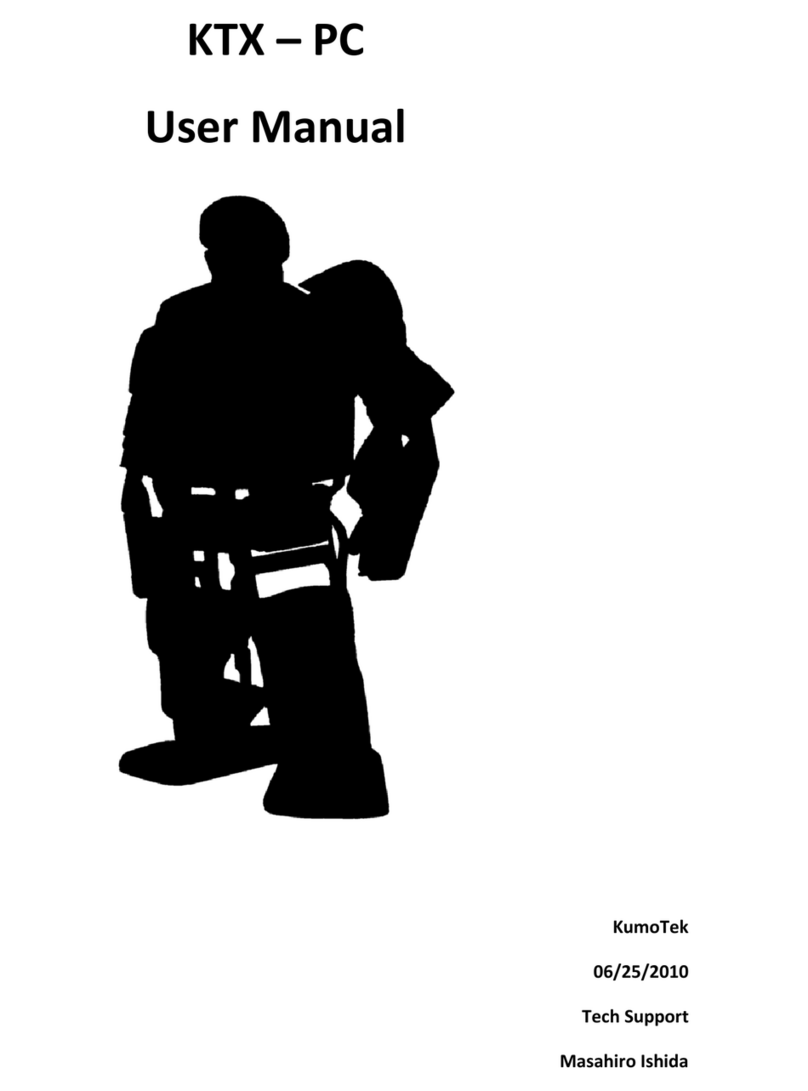Barrett WAM Wrist Operating manual

WAM Wrist
Cable-Maintenance Guide
Barrett Technology Inc.
®
Document: D1004
Version: AG.00

© 2008 Barrett Technology®, Inc. Document: D1004, Version: AG.00 Page 2 of 13
Table of Contents
1GENERAL WRIST CABLE CIRCUIT DESCRIPTIONS.....................3
2HELPFUL TOOLS & TIPS.......................................................................3
2.1 FOR FIRST TIME CABLERS .......................................................................3
2.2 TERMINOLOGY.........................................................................................4
2.3 CABLES AND CABLING ORDER ................................................................6
3CABLING THE DIFFERENTIAL............................................................6
4M5 STAGE-3...............................................................................................9
5M6 STAGE-3.............................................................................................10
6M5 AND M6 STAGES 1 AND 2..............................................................11
6.1 TOOLS AND TIPS ....................................................................................11
6.2 M5/M6 STAGE-1 PREINSTALLATION .....................................................11
6.3 M5/M6 STAGE-2 ...................................................................................11
6.4 M5 AND M6 STAGE-1 ............................................................................12
6.5 PRE-TENSIONING M5/M6 CIRCUIT.........................................................12
7AUTOTENSIONING................................................................................13
Barrett Technology, Inc.
625 Mount Auburn Street
Cambridge, MA 02138
U.S.A
US+617-252-9000
This manual is most useful when printed in color or viewed on screen.

© 2008 Barrett Technology®, Inc. Document: D1004, Version: AG.00 Page 3 of 13
1 General Wrist Cable Circuit Descriptions
The Wrist has three distinct cabling regions: (1) the motor 5 (M5) transmission, (2) the motor 6 (M6) transmission, and (3) the
differential. Stages 1 through 3 of the motor transmission circuits are stages of reduction for the main motors in the base of the
Wrist. The differential circuit translates the rotations of the motor circuits (M5 and M6) into the main pitch and roll motion of the
Wrist. An exploded schematic of the entire Wrist, shown in Figure 1, outlines the three distinct cabling circuits.
Each stage of the cabling circuits, except the differential, is made up of one pulley and one pinion; the pinion having the smaller
diameter. In the M5 and M6 input circuits, the pinion is the motor shaft in stage 1. In stages 2 and 3, the reductions are
implemented with the pinion of each stage attached to the pulley on the stage beneath it. In the differential, all mating pairs of
pulleys are of identical size resulting in a 1:1 ratio. In the worm gear tensioning system, the worm gear on the level with the
smaller diameter creates pretension for differential levels 1 and 2, while the worm gear on the level with the larger diameter
creates pretension for differential levels 3 and 4.
M6
Differential
M6 3rd Stage
M6 2nd Stage
M6 1st Stage
M5 3rd Stage
M5 2nd Stage
M5 1st Stage
M5
Figure 1 -- Schematic Diagram of Wrist Cable Circuits
2 Helpful Tools & Tips
2.1 For First Time Cablers
Re-cabling the Wrist is generally easier if the user is familiar with cabling other mechanisms such as the WAM Arm. If the user is
cabling the Wrist for the first time, she should read this entire section on wrist cabling (especially Section 6.5 on pre-tensioning
input circuits) and section 1 of the WAM Arm cabling manual before beginning to cable the Wrist. Make sure that proper tools
and cable parts have been gathered prior to any cabling activities. Figure 2 shows the tools provided with the Wrist. You will also
need the wider masking tape provided in the 4-DOF WAM Maintenance kit. The cabling instructions have numbered checkboxes
next to each step for tracking progress. These pages may be photocopied for use as a cabling checklist.
Allow roughly 4 hours to cable one of the circuits for the first time. Subsequent cabling of the wrist after the user is familiar with
the instructions can be completed in 1 hour.
One important point to keep in mind is that each cable of a given drive must be held in place at all times until the entire circuit is
pre-tensioned. The wrapped cables act like light torsion springs which, when released, even momentarily, may quickly unravel
your work back to your starting point. This is the most common error for the first-time cabler. Pre-tensioning, which prevents this
unraveling, cannot be done until all cables in that circuit have been installed. Masking tape is a tremendous aid in temporarily
preventing this unraveling. As cables are wrapped onto each pulley or pinion, hold each wrap with your fingers to keep it from
unwinding. At the end of each cabling step, one or two pieces of masking tape temporarily immobilize transmission elements and
keep cables in place.

© 2008 Barrett Technology®, Inc. Document: D1004, Version: AG.00 Page 4 of 13
Unlike the 4-DOF WAM, the Phase leads for the Wrist motors should NOT be unplugged when cabling. The Wrist should be
mounted in a vertical orientation (tool end facing up). If a Barrett Hand was purchased, the Wrist can be secured in the Lexan
stand. Without the Lexan stand, the Wrist should be left on the WAM Arm itself with the elbow joint propped up and taped
securely to orient the Wrist vertically.
Make sure that the Wrist is either mounted on the 4-DOF arm (with power OFF) or that the Wrist Safety
Termination (Figure 2) is plugged into the bottom of the Wrist. This will protect the motor controllers (Pucks) from
electrical damage as the motors are turned manually during the cabling process.
Figure 2: Wrist Maintenance Kit
2.2 Terminology
Anchor – location on the pulleys or pinions that the cable
terminations are inserted into for retention and tensioning.
Anchor-Separator – A raised section of the pinion which
creates a separate groove for the termination anchor and which
only allows the cable to cross at one of two places, where it
flattens out.
Cable – a “wire rope” typically made from very fine strands of
stainless steel. The tensile strength and stiffness is very high in a
stranded cable yet it maintains flexibility in bending.
Cable circuit – the cables and cable paths through a
transmission from input (motor) to output.
Clutch Housing – the upper portion of the black motor shafts. It
has a groove in the top of it that engages the autotensioner
mechanism and can used to push against with the push-pull
hook during manual tensioning.
Clutch Lock – the circular aluminum piece directly above the
Clutch Housing, which contains holes to place the Wrist Cross
wrap – when spanning the distance between two parallel
transmission elements (pinions or pulleys) the drive cable
crosses the plane that contains the axes of both elements. This
wrap results in the elements rotating in opposite directions
when cabled.
M5/M6-Side – directions often used in this text to identify an
item. The motor number indicates the motor (or side of the
wrist containing the motor) the component is closest to Tension
Tool in while tensioning the Wrist.
Open wrap – when spanning the distance between two
parallel transmission elements (pinions or pulleys) the drive
cable does not cross the plane that contains the axes of both
elements. This wrap results in both elements rotating in the
same direction.
Pinion – the smaller-diameter, higher-speed cylinder in a pair of
cabled transmission elements.
Pre-tension – cable tension, internal to a cable circuit, which is
present even when the drive has no external loading. Pre-
tension is added to eliminate backlash (in this case, cable slack)
in the transmission even with commanded torques.
Pulley – the larger-diameter, slower-speed cylinder in a pair of
cabled transmission elements.
Stages – as with gear trains, cable circuits can be composed of
several transmission stages, each contributing its part to the
final transmission ratio. Stage-1 is from the motor to the first
pulley, Stage-2 is from the pinion attached to the first pulley to
the second pulley, and Stage-3 is from the pinion attached to the
second pulley to the differential.
Tensioner – the mechanism in a cabled transmission, which
applies and maintains pre-tension in the drive cables. Barrett’s
patented single-point tensioner uses split motor pinions that
counter-rotate via an integrated one-way clutch to pre-tension
entire cable circuits.
Termination –a brass sphere swaged or crimped onto the end of
a cable, which serves as a point to hold onto the cable.
Upper & Lower – directions used in this text to identify
different sections of pinions and pulleys. Upper refers to the
section of the pinion/pulley above the split (closer to the tool
end of the Wrist), lower refers to the section below the split
(closer to the base of the wrist).
Wrist Safety
Termination

© 2008 Barrett Technology®, Inc. Document: D1004, Version: AG.00 Page 5 of 13
Combined terminology – There are many terminations, pulleys, pinions, and stages in the Wrist. To identify a single one, the
terminology is combined. The figures below show some examples:
Figure 3 – Views of the Wrist
Orientations
Clockwise/Counter-clockwise: view the Wrist facing the output plate of the Wrist (base of the Wrist facing away from you).
M5/M6-Side: Use the labels on the side of the lower area of the wrist to determine which is the M5-Side and which is the M6-
Side.
Counting the number of turns
Throughout this manual, there are instructions to wind a cable around a pinion or pulley a certain number of turns. It is important
to understand exactly how the number-of-turns are counted. Always start at the anchor (brass termination) of the cable as the
“zero” point and end where the cable comes off of the pulley. In the example picture below, the lower cable is wound around the
larger pulley exactly 6 times (note the cable comes off of the pulley almost exactly above the brass termination).
Figure 4: Example of counting the number of wraps
6
0
M5
M6 M5 M6
M5 Stage-3 Pinion
Split
M5-Side
Stage-1
Pulley
Pin on M5-Side
Stage-2 Pulley
M6-Side Stage-1
Lower Pulley
Termination
Stage-3
Upper
Pulley Open wrap
from Pulley
to Pinion in
M6-Side
Stage-2
M6-Side
Stage-2
Lower-
Pinion
Anchor-
Separator

© 2008 Barrett Technology®, Inc. Document: D1004, Version: AG.00 Page 6 of 13
2.3 Cables and Cabling Order
Table 1 lists the specifications of each type of cable. The Differential should be cabled first, followed by either the Motor 5 or
Motor 6 circuits (all 3 stages). The motor circuits are independent and should be treated as such. Finish one side (M5 or M6)
completely (all 3 stages) before working on the other motor side.
If a differential cable needs to be replaced, it is possible to replace it without having to remove all other cables. Contact Barrett for
assistance. If a stage 1 cable needs to be replaced, it is generally possible to do this without removing the other cables in the
transmission. If a stage 2 cable needs to be replaced, it is generally possible to do this without removing the stage 3 cables in the
transmission; however, the stage 1 cables will have to be removed. If a stage 3 cable needs to be replaced, all stages on that one
motor side must be removed.
Table 1: Cable Specifications
Barrett
P/N Barrett
Description Qty per
Wrist
Qty per
Maintenance
Kit
Length between
terminations
(mm)
B1216 WristCable-Differential-Level1 1 1 97 +/- 2
B1217 WristCable-Differential-Level2 1 1 107 +/- 2
B1218 WristCable-Differential-Level3 1 1 132 +/- 2
B1219 WristCable-Differential-Level4 1 1 152 +/- 2
B3477 WristCable-Stage1 4 2 860 +/- 5
B3478 WristCable-Stage2 4 2 610 +/- 5
B3479 WristCable-Stage3 4 2 560 +/- 5
3 Cabling the Differential
The differential circuits are shown in Figure 5. They consist of four cables riding on four different diameter horizontal steps. The
four cables make up two independent circuits. The top horizontal steps and the 2 smallest vertical steps form one circuit, and the
bottom horizontal steps and the 2 larger vertical steps form the other circuit. Each circuit is tensioned with a worm gear located in
the vertical steps. While cabling the differential, move J6 as necessary to have proper access to the section of the differential you
are working on. Both blue RTV shrouds must be removed (2 screws each). Of the two differential wiring shield assemblies (half-
moon-shaped sheet metal plus triangular machined aluminum piece), one of them must be removed – the one that does NOT
include the hidden Joint 5 stop. Figure 5 shows the correct wiring shield assembly has been removed.
Figure 5 - Differential Pulleys
Level 4
Level 3
Level 2
Level 1
Vertical
Pulleys
Lower Horizontal Pulle
y
s
U
pp
er Horizontal Pulle
y
s

© 2008 Barrett Technology®, Inc. Document: D1004, Version: AG.00 Page 7 of 13
Figure 6 -- RTV rubber shroud.
□1. Rotate J6 to its far positive position. Using a 1/8” Hex Wrench, remove the worm on the section of the vertical steps with
the smaller diameter (see Figure 7). Set it aside (keeping it in a place where it will not be lost).
□2. Rotate J6 to its far negative position. Remove the worm on the section of the vertical steps with the larger diameter. Set it
aside separately from the other worm, taking care to note which side each worm was seated, as you will need to replace it
on the same side when done.
□3. The Level 2 cable (B1217) must be pre-installed between the horizontal and vertical pulleys before any other cables are
installed, because the gap between the Level 2 horizontal pulley and Level 2 vertical pulley is too small for the brass
termination on the cable to fit through. The bottom 3rd stage pulley and 2 upper horizontal differential pulleys are fixed to
each other. Manually turn the bottom 3rd stage pulley until the 2 upper horizontal pulleys look roughly as shown in Figure
9. Insert one end of the Level 2 cable (B1217) BACKWARDS into the Level 2 horizontal pulley anchor. Rotate the
bottom 3rd stage pulley counter-clockwise approximately ½ turn. The cable should now be threaded through the small gap
between the Level 2 horizontal and vertical pulleys. Remove the brass termination from the horizontal pulley and leave
both ends of the cable unconnected.
□4. Get a Level 1 cable (B1216) and insert one end of the cable into the vertical anchor on the level 1 wrist differential (see
Figure 8) and thread the cable through the gap between the steps (see Figure 9). (All other differential cables are installed
similarly, so use Figure 8 and Figure 9 as reference points for the other circuits.)
□5. Cross the cable onto the smallest step of the upper horizontal differential level. Rotate the Level 1 horizontal pulley as
required (by rotating the 3rd stage bottom pulley) and insert the termination into the anchor, then rotate the bottom 3rd stage
pulley by hand to tighten the cable.
Figure 7 – Removing the Worm Figure 8 – Anchoring the Level 1
Cable Figure 9 – Threading the Level 1 Cable
□6. Put one end of the pre-threaded Level 2 cable (B1217) in the anchor in the larger horizontal step in the differential top
(Level 2)
□7. Cross over to the Level 2 vertical step, rotate the vertical step (the tensioner worm is not yet installed) as necessary to allow
the second termination to be inserted into the anchor on the second step. Then, rotate it back to tighten the cables.

© 2008 Barrett Technology®, Inc. Document: D1004, Version: AG.00 Page 8 of 13
□8. Insert a tensioner worm into the worm slot in the Level 2 vertical step and tighten until the cable is taut enough not to fall
off of its level (the worm can keep turning once it has reached the bottom of its slot and will continue tightening while it
turns).
□9. Move J6 slowly through its full range and allow the cables to find their preferred locations. Retighten the screw to remove
any remaining slack and move J6 through its full range again to verify the cables are working properly.
□10. Rotate J6 into roughly the zero position (pointing straight up). Insert one end of the Level 3 cable (B1218) into the anchor
on the Level 3 vertical step in the differential.
□11. Bring the Level 3 cable around roughly 3/4 turn on its vertical step and under the pulley, crossing over to the lower
horizontal step (Level 3). The upper 3rd stage pulley is fixed to the 2 lower horizontal steps (Levels 3 & 4). Rotate the
upper 3rd stage pulley as necessary and insert the free end of the Level 3 cable into the anchor on the horizontal pulley, and
rotate back to tighten.
□12. Rotate J6 slightly in the negative direction, while keeping tension on the Level 3 cable, so that the Level 4 horizontal
termination is visible and accessible. Insert one termination of the Level 4 cable (B1219) into the anchor in the horizontal
step. Wrap the cable around approximately ½ turn, under the differential shield, then under and around the Level 4 vertical
pulley.
□13. Rotate the Level 4 vertical step (the second tensioner worm is not yet installed) until the free termination can be put into
the last anchor. Then, rotate it back to tighten the cables.
□14. Insert the second tensioner worm into the wormhole in the Level 4 vertical step and tighten until the cable is taut enough
not to fall off of its level.
□15. Slowly move Joint 6 through its full motion ranges to confirm that the 2 new differential cables are properly installed. If
new slack propagates through the cables during this step, again tighten both worms until the cable is taut enough not to fall
off of its level; do not tighten it more.
□16. Replace the missing wiring shield assembly and blue RTV shrouds. Make sure the plastic pins in the shrouds align properly
with each other.

© 2008 Barrett Technology®, Inc. Document: D1004, Version: AG.00 Page 9 of 13
Figure 10 – M5 Stage-3 Cables (color-enhanced)
Figure 11 – Taping the M5 Stage-3 Lower-
Pinion
4 M5 Stage-3
The cabling circuit for the M5 Stage-3 is represented in Figure 10 (only the
colored cables are in the M5 circuit).
□1. Position the wrist so that you can easily access the M5-Side. Rotate
joint 5 to its far positive stop (fully CCW), and flip the wrist pitch
opposite to the side that you are working on. Secure J5 and J6 with
tape.
□2. Begin with a 3rd-stage cable (B3479). Attach one end to the top
anchor in the lower 3rd-stage pulley. If necessary, push the
termination in further and pull the cable across the surface of the
pulley to force the termination into the orientation visible in Figure
10.
□3. Wrap the cable around the pulley 2.5 times using tape to hold the
wraps.
□4. Transition over to the M5 pinion using a cross-wrap. Attach the free
end of the cable to the bottom anchor of the pinion. Wind on the
cable by rotating the pinion (after approximately ½ of a turn the
cable should pass over the flat section of the anchor-separator).
Rotate the pinion until the cable is tight.
□5. Immobilize the bottom of the pinion with tape to prevent cable
unwinding (see Figure 11).
□6. Attach one end of another 3rd-stage cable (B3479) to the lower
anchor in the lower 3rd-stage pulley. Wrap the cable up the pulley 3
times using tape to hold each wrap as necessary. This cable will
transition above the first cable, so it must wrap between the wraps of
the first (see color-enhanced Figure 10).
□7. Cross over to the pinion using a cross-wrap. Attach the free end of
the cable to the anchor in the top of the pinion and rotate the top
segment of the pinion only. After approximately ½ of a turn the
cable should pass over the flat section of the anchor-separator and
the 2nd ½ of the first turn should track directly down below the pin
on the pinion surface, and all other turns should lie on the pinion
surface below the pin but above the pinion split. Guide the cable
carefully to ensure that the cable winds on smoothly and evenly.
Rotate the pinion until the cable is tight.
□8. Immobilize the top of the pinion with tape.
□9. Using a thin piece of tape, connect the upper and lower portions of
the M5 pulley/pinion pair by laying the tape around the “pinion split”
(see Figure 12).
□10. Remove ALL other tape.
□11. Gently move the M5 stage-3 circuit to its extremes. Ensure that the
cables are not tangled or rubbing tightly. Nudge the cables into the
relative positions as shown in Figure 10. If necessary, carefully
remove the pinion tape, retighten the circuit, and resecure.
□12. Continue on to Section 6 and follow the directions for the M5 circuit
leaving the thin tape around the pinion split in place for now.
Figure 12 – Taping the M5 Stage-3 Pinion Split
Stage 3 Upper Pulley
Cable Termination

© 2008 Barrett Technology®, Inc. Document: D1004, Version: AG.00 Page 10 of 13
Figure 13 – M6 Stage-3 Cables (color-
enhanced)
Figure 14 – Taping the M6 Stage-3
Lower-Pinion
5 M6 Stage-3
The cabling circuit for the M6 Stage-3 is represented in Figure 13.
□1. Position the wrist so that you can easily access the M6-Side. Rotate joint 5 to
its far positive stop (fully CCW), and flip the wrist pitch opposite to the side
that you are working on. Secure J5 and J6 with tape.
□2. Begin with a 3rd-stage cable (B3479). Attach one end to the top anchor in
the upper 3rd-stage pulley.
□3. Wrap the cable around the pulley 2 times using tape to hold the wraps.
□4. Transition over to the stage-3 pinion using a cross-wrap (the split in the
surface of the M6 pinion is closer to the top of the wrist that that on M5).
Attach the free end of the cable to the bottom anchor of the pinion. Wind on
the cable by rotating the pinion. After approximately ½ of a turn the cable
should pass over the flat section of the anchor-separator and the 2nd ½ turn
should track directly above the pin in the pinion surface, and all other turns
should lie on the pinion surface above the pin but below the pinion split.
Rotate the pinion until the cable is tight.
□5. Immobilize the bottom of the pinion with tape to prevent cable unwinding
(see Figure 14).
□6. Attach one end of another 3rd-stage cable (B3479) to the lower anchor in the
upper 3rd-stage pulley. Wrap the cable up the pulley 3.5 times using tape to
hold each wrap as necessary. This cable will transition above the first cable,
so it must wrap between the wraps of the first (see color-enhanced Figure
13).
□7. Cross over to the pinion using a cross-wrap. Attach the free end of the cable
to the anchor in the top of the pinion and rotate the top segment of the pinion
only (after approximately ½ of a turn the cable should pass over the flat
section of the anchor-separator). Guide the cable carefully to ensure that the
cable winds on smoothly and evenly above the pinion split. Rotate the pinion
until the cable is tight.
□8. Immobilize the top of the pinion with tape.
□9. Using a thin piece of tape, connect the upper and lower portions of the M6
pulley/pinion pair by laying the tape around the “pinion split” (see Figure 12
of M5 instructions).
□10. Remove ALL other tape.
□11. Gently move the M6 stage-3 circuit to its extremes. Ensure that the cables
are not tangled or rubbing tightly. Nudge the cables into the relative
positions as shown in Figure 13. If necessary, carefully remove the pinion
tape, retighten the circuit, and resecure.
□12. Continue on to Section 6 and follow the directions for the M6 circuit leaving
the thin tape around the pinion split in place for now.

© 2008 Barrett Technology®, Inc. Document: D1004, Version: AG.00 Page 11 of 13
6 M5 and M6 Stages 1 and 2
6.1 Tools and Tips
•Cabling Stages 1 and 2 is a virtually identical process for both the M5 and the M6 cable circuits.
•All pictures in this section are pictures of the M6 circuit; however, they should also approximate the appearance of the M5
circuit.
•In this section, any quantities that differ between the M5 circuit and the M6 circuit will appear in the form: (<M5
quantity>/<M6 quantity>)
Figure 15 – Stage-1 Preinstallation
Figure 16 – Stage-2 Cabling
Figure 17 – Taping the Stage-2 Lower-
Pinion
6.2 M5/M6 Stage-1 Preinstallation
□1. Insert the Stage-1 Cable (B3477) into the lower anchor of the Stage-1
pulley.
□2. Wrap all of the cable onto the section of the pulley below the split by
turning the pulley clockwise, while keeping tension on the cable.
□3. Tape the cable to the pulley to prevent the cable from unraveling (see
Figure 15).
6.3 M5/M6 Stage-2
The cabling circuit for the second stage is represented in Figure 16.
□1. Begin with a 2nd-stage cable (B3478). Attach one end to the top anchor of
the 2nd-stage pulley.
□2. Wrap the cable around the pulley (1.75/2) times, using tape to hold the
wraps.
□3. Transition over to the 2nd-stage pinion using an open-wrap. Attach the free
end of the cable to the bottom anchor of the pinion. Slowly and evenly wind
on the cable by rotating the pinion until the cable is tight (after
approximately ½ of a turn the cable should pass over the flat section of the
anchor-separator).
□4. Immobilize the bottom segment of the pinion with tape to prevent Stage-2
from unwinding (see Figure 17).
□5. Attach one end of another 2nd-stage cable (B3478) to the bottom anchor of
the 2nd-stage pulley.
□6. Wrap the cable around the pulley (5/5.5) times using tape to hold the wraps
if necessary.
□7. Transition over to the 2nd-stage pinion using an open-wrap. Attach the
remaining free end of the cable to the top anchor of the pinion and rotate
the top segment of the pinion only (after approximately ½ of a turn the
cable should pass over the flat section of the anchor-separator). Guide the
cable carefully to ensure that the cable winds on smoothly and evenly.
Rotate the pinion until the cable is tight.
□8. Immobilize the top of the pinion with tape to prevent Stage-2 from
unraveling. Stage-2 should now look like Figure 18.
Figure 18 – Stage-2 Final Configuration

© 2008 Barrett Technology®, Inc. Document: D1004, Version: AG.00 Page 12 of 13
Figure 19 – Stage-1 Cabling
Figure 20 – Taping Stage-1 Lower-Pinion
6.4 M5 and M6 Stage-1
The cabling circuit for the first stage is represented in Figure 19.
□1. Begin with a 1st-stage cable (B3477). Attach one end to the top anchor of
the 1st-stage pulley.
□2. Wrap the cable around the pulley about (1.75/1.25) times, using tape to
hold the wraps. Make sure that the cable does not wrap above the pin on
the upper pulley.
□3. Transition over to the 1st-stage pinion (motor pinion) using an open-wrap.
Attach the free end of the cable to the bottom anchor of the pinion. Slowly
and evenly wind on the cable by rotating the pinion until the cable is tight.
□4. Immobilize the bottom (inner) segment of the pinion with tape to prevent
Stage-1 from unwinding (see Figure 20).
□5. Unwrap approximately ½ of a turn of the cable that was pre-installed in
Section 6.2 while keeping the rest of the cable taped in place on the pulley
(about 7 turns).
□6. Transition over to the M6-Side 1st-stage pinion using an open-wrap. Attach
the remaining free end of the cable to the anchor on the Clutch Housing
(which houses the one-way clutch) and rotate the Clutch Housing to take
up the slack. Guide the cable carefully to ensure that the cable winds on
smoothly and evenly. Rotate the Clutch Housing until the cable is tight. It
is normal that the Clutch Housing may be a bit difficult to rotate. The stage
should now look like Figure 21.
□7. Remove all tape except for the tape across the stage 3 pinion split.
Figure 21 – Stage-1 Final Setup
6.5 Pre-tensioning M5/M6 Circuit
Before pre-tensioning a particular cable circuit, the cables on every stage of a transmission should be positioned on the pulley and
pinion, as shown in Figure 22. All of one cable should be completely above the split in the pulley and below the split in the pinion
while the other cable is completely below the split in the pulley and above the split in the pinion (make sure to check both cables
that are attached between each pinion and pulley). To achieve the required cable positions, slowly back-drive the wrist until the
cables properly align relative to the split lines. When the cables are located correctly, insert the Wrist Tension Tool into the clutch
lock and push on the groove in the Clutch Housing with the push-pull hook to tension the entire cable circuit.
CORRECT INCORRECT
..
Cables do not wrap over splits Cables cross splits before transition
Figure 22 -- Proper Position of Wrist Cables for Pre-Tensioning

© 2008 Barrett Technology®, Inc. Document: D1004, Version: AG.00 Page 13 of 13
Manually run the Wrist through six cycles of J5 and J6 so that the stage 1 cables track up and down the motor shafts over their
entire range. The Wrist circuits, with their three stages of reduction, require more attention than any other WAM circuits during
pre-tensioning. The third stage cables must be carefully placed to prevent both scrubbing between cables placed too close
together, pulling at odd angles, or falling into termination slots if cables are too far apart. Cables placed with a large angle relative
to the horizontal will eventually reorient themselves, but not necessarily in the proper arrangement.
Once the cables have been repositioned as shown in Figure 22, retension again by inserting the Wrist Tension Tool into the clutch
lock (to keep the motor shaft from turning) and pushing on the clutch housing with the push-pull hook. Repeat the process of
running the wrist through its range of motion and re-tensioning until all the stage 1 and 2 cables are tight.
Remove the tape across the stage 3 pinions splits (M5 and M6) and repeat the tensioning procedure:
1) Tension.
2) Run J5 and J6 through full ranges of motion so both M5 and M6 cables track up and down over entire length of
black motor shafts.
3) Repeat step 2 six times.
4) Repeat steps 1-3 six times minimum until cables are reasonable taught.
7 Autotensioning
Full instructions for using the Wrist’s autotensioning mechanism are coming soon. Contact Barrett Technology for assistance.
Table of contents
Other Barrett Robotics manuals
